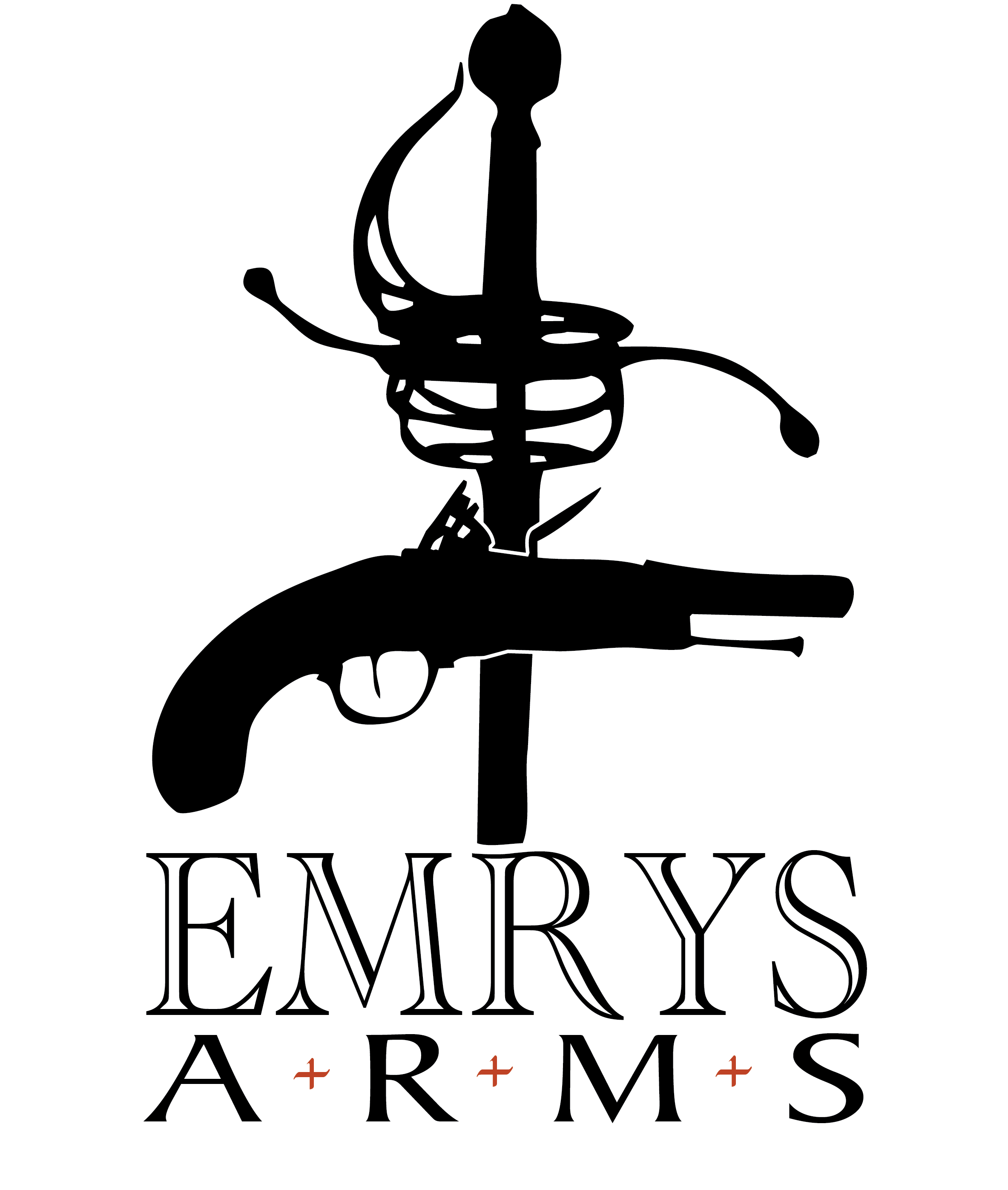| Collection #: | 2020.020 |
|---|---|
| Type: | Civilian Hunting / Naval |
| Nationality: | British |
| Pattern: | c.1690 |
| Date: | c.1690 - 1710 |
| Hilt: | Gilt Brass |
| Blade Length: | 49.3cm (19.41") |
| Blade Width: | 3cm (1.18") |
| Overall Length: | 62cm (24.41") |
| Maker: | Partial Mark on either side of blade, but undecypherable |

The characteristics of this style of hunting sword are indicative of those produced around the last quarter of the 17th century into the beginning of the 18th century.
“On the brass hilts which are nearly all cast with decorative hilts (Fig. 11) a standard series of moulds or patterns seem to have been employed, although not always in the same combination. A shell guard cast with a classical warrior scene may on one sword be joined to a knuckle-bow with a trophy of arms in the centre. On another sword the same shell guard will be found with a knuckle-bow embellished with a Roman bust. Favourite subjects for the pommels seem to have been combinations of Tudor roses, fluer-de-lis, cherub, or Royal heads. Again pommels of the same mould are found with different combinations of bows and guards. This interchange of decorative mouldings was not confined to the range of hangers, subjects used on the latter being applied to bayonets, small swords and military swords”.
While used in the hunt, they were also popular amongst the early British navy. “Ornate hangers, frequently described today as ‘hunting swords’ since their decoration often includes allusions to the chase, seem to have been widely adopted by officers. They had the same advantage of handiness as did the cheaper hangers over the more orthodox small sword…”
Page 24 of this book by Annis, contains an image of the sword discussed above which is a plainer, but virtually identical version of sword 2020.020 discussed here.
Further regarding naval usage, “in the first half of the eighteenth century, the most popular style of fighting sword for naval officers seems to have been the hanger or hunting sword. This was exactly the sane type of weapon as any civilian gentleman might choose to carry in less formal circumstances, such as when travelling. Few bear any clear evidence of naval ownership so, unless a weapon comes with some provenance, it is impossible to ascribe it with certainty to a naval source. The main evidence for the popularity of these weapons comes from the frequency with which they are seen in portraits of naval officers of this period”.
This example discovered in Victoria, British Columbia, has had a hard life and it would be interesting to discover how it made its way half-way around the world. Firstly, regarding the hilt. The condition is fair, with the pommel showing the worst of the abuse. The top of the pommel consists of four quadrants around the tang button. Facing each other in one direction are two cherub faces. Facing across from each other in the other direction are two flour-de-lis. The bottom brass of the pommel seems to have been almost torn away and it is hard to say if that is due to the replacement of the knuckle-guard or just damage from use. Needless to say the pommel is secure and tight with no movement at all. The knuckle-guard has been replaced at some point. As to whether this is a period repair is hard to say as it is a different style of knuckle-guard than what I have seen on other examples. It is narrow at the base and seems to fit into a pin shaped out of the remains of the original guard and widens as it approaches the pommel. It then seems to have a loop in the end which is inserted over the tang and then had the pommel reaffixed. Yet, the tang button doesn’t show evidence of being recently manipulated – which leads me to wonder how old is this repair? The base of the guard flares into two strands on the right hand side to encompass a small guard protruding on the right side only. The edges of the oval guard seem to curl in on themselves in a floral display and in the middle is a winged cherub or angel. Below the angel head on the rim of the guard appears to be a (bearded?) face with protrusions (?) out the sides of the face. The quillon is still present and intact, however, while there are images on the quillon, it is now impossible to make out what they were. The ferrule still holds the smooth stag horn grip firmly in place with only a slight wiggle.
The blade is still remarkably bright and sharp. It does show many years of sharpening as there is a marked drop in width from the ferrule to just a few centimetres further down the blade. Both the right and left sides of the blade show evidence of a makers mark, but not enough left to tell who. The false edge starts about 18.5cm’s from the tip. There are just a few small knicks in the blade which have been mostly ground out and are consistent with just over three hundred years of life. A handy and light hanger which no doubt has had a very interesting journey.
We use cookies to improve your experience on our site. By using our site, you consent to cookies. Enjoy the cookies...they're delicious...
Websites store cookies to enhance functionality and personalise your experience. You can manage your preferences, but blocking some cookies may impact site performance and services.
Essential cookies enable basic functions and are necessary for the proper function of the website.
Statistics cookies collect information anonymously. This information helps us understand how visitors use our website.
Google Analytics is a powerful tool that tracks and analyzes website traffic for informed marketing decisions.
Service URL: policies.google.com (opens in a new window)

